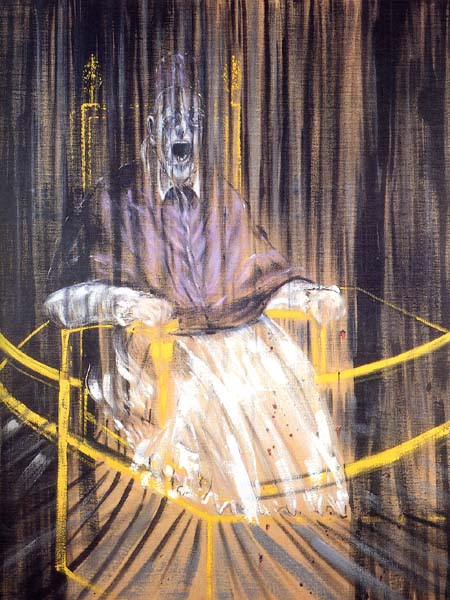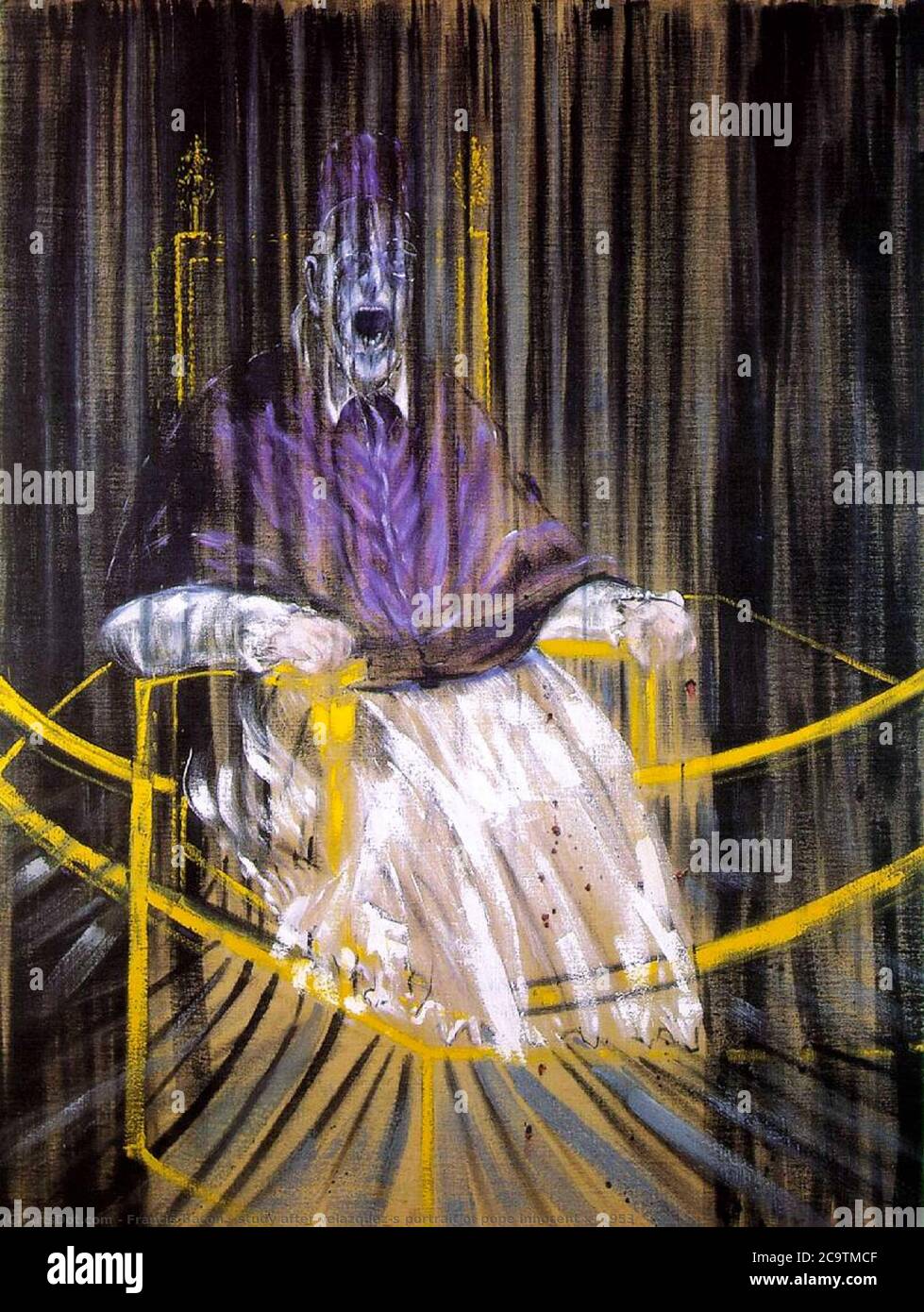Why does Francis Bacon's Study after Velázquez continue to captivate the art world decades after its creation? This bold exploration of human vulnerability and power has become a cornerstone of modern art, challenging viewers to confront uncomfortable truths about the nature of humanity.
Study after Velázquez (1950) by Francis Bacon represents a pivotal moment in the evolution of modern portraiture. As an Irish-born English artist, Bacon drew inspiration from Diego Velázquez's 1650 Portrait of Innocent X, creating a series of works that transcend traditional representation. This particular panel painting presents a full-length view of the pope, enveloped in vertical folds that suggest both containment and chaos. The image embodies Bacon's unique ability to distort reality while maintaining a profound connection to his source material.
| Bio Data | Details |
|---|---|
| Full Name | Francis Bacon |
| Date of Birth | 28 October 1909 |
| Place of Birth | Dublin, Ireland |
| Date of Death | 28 April 1992 |
| Nationality | British |
| Education | Self-taught |
| Notable Works | Study after Velázquez's Portrait of Pope Innocent X |
| Career Highlights | Renowned for his raw, emotionally charged portraits; major exhibitions at Tate Britain, MoMA, and Centre Pompidou |
Bacon's most iconic image remains the screaming pope from Study after Velázquez's Portrait of Pope Innocent X. This powerful piece reinterprets Velázquez's original portrayal of a manipulative and unscrupulous pope who adopted the name Innocent. Through this work, Bacon not only pays homage to one of history's greatest portraitists but also introduces elements of psychological tension and existential angst that define his artistic vision.
The period between 1950 and 1971 marked the zenith of Bacon's engagement with the theme of the pope. During these two decades, he produced numerous variations on the subject, each revealing new dimensions of the human condition. These works stand as testament to the artist's relentless pursuit of understanding the complexities of human existence. In Study for a Red Pope, Second Version, completed in 1971, Bacon achieves a masterful synthesis of form and emotion, encapsulating the essence of his lifelong exploration into the nature of despair and solitude.
This series of paintings represents more than mere reinterpretations of Velázquez's masterpiece. They serve as vehicles for exploring fundamental questions about identity, authority, and mortality. By distorting and exaggerating the features of the pope, Bacon creates dynamic compositions that resonate deeply with contemporary audiences. His use of color, texture, and composition transforms the static figure of the pope into a living embodiment of existential crisis.
Throughout his career, Francis Bacon maintained an obsessive fascination with the papal theme. While working on these paintings in the South of France, he continued to refine his approach, drawing upon various influences ranging from photography to film. This dedication resulted in some of his most celebrated works, which have since become cornerstones of twentieth-century art.
The Phaidon Focus book offers valuable insights into Bacon's methodology and motivations behind these paintings. It reveals how the artist approached each canvas with meticulous attention to detail while simultaneously embracing spontaneity and chance. This dual approach allowed him to create works that remain as relevant today as when they were first conceived.
On francis-bacon.com, extensive documentation provides further context for understanding the significance of these paintings within the broader scope of Bacon's oeuvre. The website's comprehensive catalogue raisonné details the evolution of his ideas and techniques over time, offering scholars and enthusiasts alike a wealth of information about his creative process.
Art students and professionals alike find inspiration in Bacon's distinctive style, characterized by its unsettling blend of realism and abstraction. His ability to convey profound emotional states through seemingly chaotic forms continues to influence generations of artists. Even those unfamiliar with art history can appreciate the visceral impact of his work, which speaks directly to universal human experiences.
In studying Velázquez's original portrait, Bacon delved deeply into questions of representation and authenticity. By reimagining the pope in various contexts and configurations, he challenged conventional notions of portraiture itself. This intellectual rigor combined with technical mastery produces artworks that demand sustained engagement from their audience.
As we examine Study after Velázquez's Portrait of Pope Innocent X alongside other works in the series, we gain insight into Bacon's evolving relationship with his chosen subject matter. Each painting reflects different aspects of his preoccupations with power, vulnerability, and the fragility of human existence. Together, they form a cohesive body of work that stands as testament to one of the twentieth century's most important artistic voices.
Beyond mere technical achievement lies the deeper significance of these paintings: their capacity to provoke thought and elicit strong emotional responses. Whether viewed individually or collectively, they invite us to consider our own place within the complex web of human experience. Through their raw honesty and unflinching examination of difficult truths, Francis Bacon's papal portraits continue to resonate with audiences worldwide.
In conclusion, Study after Velázquez's Portrait of Pope Innocent X exemplifies Francis Bacon's extraordinary talent for transforming classical themes into profoundly modern expressions. By pushing the boundaries of traditional portraiture, he created works that challenge our perceptions and invite deeper contemplation. As such, these paintings occupy a vital position within the canon of Western art, ensuring their lasting relevance for future generations.



